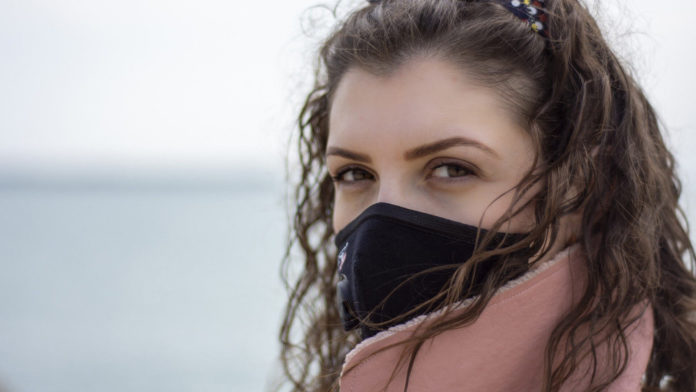During a COVID-19 press conference, Prime Minister Justin Trudeau coined a new term that he immediately regretted while answering a question about broad public use of non-medical masks. But ‘speaking moistly’ is more than just an awkward phrase to ignite wildly popular auto-tunes. It’s a real concern when it comes to spreading infectious disease.
It’s well accepted that coughing or sneezing can create aerosols that can spread COVID-19, but having a conversation may also be dangerous, says speech scientist Bryan Gick, professor of linguistics at the University of British Columbia.
A cough or a sneeze produces a lot of airborne droplets, but they tend to be brief and infrequent events. We release fewer particles of saliva by breathing or speaking, but a conversation tends to unfold over a longer period of time. This prolonged exposure can add up, and although it hasn’t been demonstrated as a method of transmission for COVID-19, it’s a common way that pathogens like viruses can spread in general.
Some people naturally produce more droplets than others when they speak, but people also create more of them when they speak loudly, or when they sing.
This video shows droplets produced during speech with and without a mask by illuminating them with laser light. Credit: U.S. National Institutes of Health, New England Journal of Medicine.
Notably, even our perception of sounds are affected by whether we can feel pops of air on our skin as people speak.
“We also know that feeling these bursts of air on your skin is a normal part of everyday communication,” said Gick in a press release.
“One way we know this is that if you aim an artificial burst of air anywhere on someone’s skin, it can change their auditory perception. They’ll have the illusion of having heard an aspirated sound. They’ll mishear ‘bah’ as ‘pah’ if they feel a burst of air on their skin.”
That means that in normal everyday conversations, people can be close enough together to feel the air being passed between them. That’s another reason why physical distancing is so important to limiting the spread of COVID-19 — even more so than masks, which are imperfect barriers to droplets.
“This is part of how we experience speech, and we haven’t paid much attention to it in the past as a vehicle for pathogen transmission,” added Gick. “Speech isn’t associated with illness the way coughing and sneezing is. It’s associated with good things like connection and intimacy.”
When people wear masks, they can help contain the particles produced during speech, keeping them with the speaker. We now know that people can be infected by the COVID-19 virus for many days before showing symptoms, or symptoms may never appear. This troubling feature of the disease is driving recommendations that even healthy people wear a mask in conjunction with strict physical distancing and frequent handwashing.
This is out of an abundance of caution, as there is still a lot about the virus and its transmission that we don’t know. It’s unclear whether the droplets produced in breath or speech carry the virus, how long they stay might infectious in real-world conditions, or how much of the virus needs to be inhaled to spread infection. But spreading COVID-19 through speech remains a real possibility.
That’s why Gick hopes that experts in speech will collaborate with experts in airborne pathogens. These diverse fields could shape recommendations for public health.
So while it may not have been the most elegant way to convey a potential danger, at least ‘speaking moistly’ has started a discussion that may be important to how we protect ourselves from an unseen threat.





































